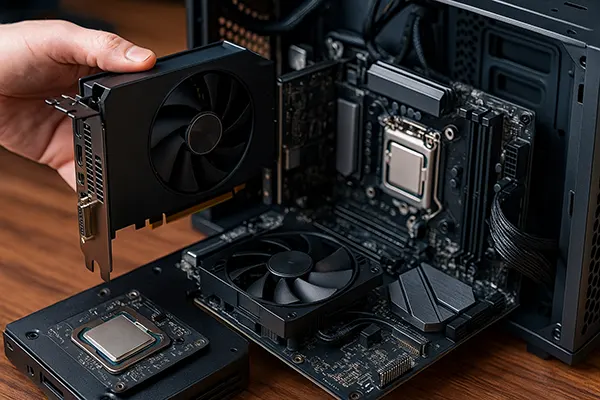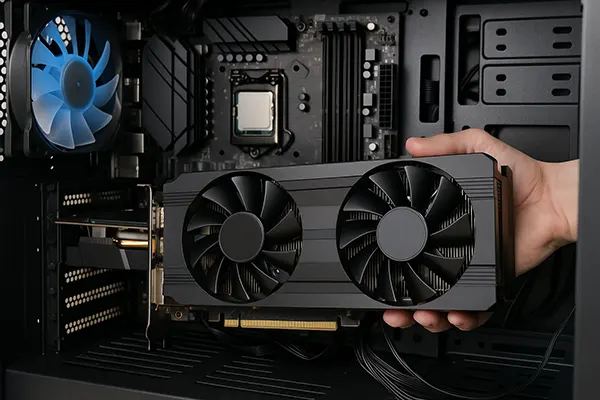
Modular PC Architecture: Will Removable GPUs and CPUs Become the Future Standard?
The idea of modular computing has captivated both tech enthusiasts and industry professionals for years. As of June 2025, the feasibility of truly modular PCs—where graphics cards (GPUs) and central processing units (CPUs) are designed for easy interchangeability—has taken a notable step forward. With growing demand for sustainability, upgradeability, and user freedom, modularity may no longer be a niche innovation, but a mainstream requirement for modern hardware design.
The Shift Toward Modular Components
In recent years, several leading tech manufacturers have begun to explore new standards that support hot-swappable or easily replaceable GPUs and CPUs. Initiatives like Intel’s Compute Element and AMD’s new socketed APU architecture indicate a broader movement toward decoupling components from fixed configurations. These advancements are largely driven by market pressure for repair-friendly and upgrade-ready machines.
One of the most tangible developments in this area is the growing number of modular laptops and small form factor desktops featuring socketed processors and detachable GPUs connected via PCIe or proprietary docks. Brands such as Framework and Lenovo have released consumer-ready machines with varying degrees of modularity, signalling growing confidence in this direction.
Nonetheless, full modularity still faces challenges in terms of heat management, performance stability, and universal compatibility. The transition requires not only hardware redesign but also significant software and firmware adaptations to ensure plug-and-play reliability across different ecosystems.
Industry Support and Open Standards
The success of modular PC architecture hinges on industry-wide cooperation and the adoption of open standards. The PCI-SIG consortium’s work on PCIe Gen 6 and the upcoming Gen 7 standard contributes to more efficient and scalable data lanes between modular components. Similarly, initiatives such as the Universal Chiplet Interconnect Express (UCIe) aim to simplify communication between disaggregated computing elements.
Large-scale support is also visible in enterprise and data centre applications. Cloud server operators increasingly seek modular blade systems where compute units can be replaced independently, reducing downtime and extending system life. This influence from enterprise architecture is gradually making its way into the consumer space, particularly among high-performance users.
However, despite technological advances, commercial adoption will depend on affordability, user education, and after-sales support. Without standardised frameworks and easy-to-access upgrade paths, modular hardware risks becoming impractical for average users.
Benefits of a Modular PC Future
The primary advantage of modular systems lies in their flexibility. Users can upgrade their systems without replacing the entire unit, reducing electronic waste and total cost of ownership. This model supports environmental sustainability and aligns with the European Union’s Right to Repair initiatives, which aim to extend the usable lifespan of electronics.
Modular architecture also empowers enthusiasts and professionals who demand specific configurations. Gamers, developers, and digital artists benefit from the ability to tailor their systems precisely to task requirements. It also simplifies system maintenance and component troubleshooting, making repairs less costly and more accessible.
Importantly, the concept supports decentralised manufacturing and regional supply chains. Instead of being tied to fully assembled systems, consumers and repair shops can source individual components, enhancing competition and reducing dependency on monopolistic vendors.
Environmental and Economic Impacts
According to the 2025 Global E-Waste Monitor, nearly 63 million tonnes of electronic waste were produced in 2024. Modular design in computing can significantly reduce this figure by encouraging part-level upgrades rather than wholesale replacements. Consumers keep the core device longer, replacing only what is obsolete or malfunctioning.
From an economic perspective, the modular market opens new business models. Component resale, refurbishing, and third-party manufacturing become viable niches, stimulating economic diversity in the hardware ecosystem. Local assembly hubs could thrive, offering tailored machines for niche markets like gaming, education, and content creation.
Nevertheless, economic viability hinges on scalability and accessibility. Without mass production and global standards, modularity may remain a luxury rather than a default option. Balancing innovation with inclusivity remains a key challenge for industry leaders.

Obstacles to Widespread Adoption
Despite its potential, modular PC architecture still faces technical, economic, and logistical barriers. Performance degradation caused by modular interconnects, challenges in cooling modular systems, and risks of mechanical failure due to frequent part handling are all critical concerns. Moreover, size constraints in compact systems make true modularity difficult without compromising thermal efficiency.
Security and compatibility are also major hurdles. Ensuring secure firmware updates, trusted component sourcing, and BIOS-level compatibility across various modules requires a tightly controlled ecosystem. For end-users, this could mean fewer choices if OEMs attempt to lock users into proprietary systems.
In addition, the current consumer mindset—shaped by years of disposable technology—may hinder modularity’s mass appeal. Changing habits and educating users about the benefits of upgradeable systems will require time, incentives, and consistent messaging from both industry and regulators.
Forecasts and Long-Term Outlook
Experts predict a gradual but steady shift toward modular computing over the next five to ten years. While complete modularity may remain limited to enthusiast and professional sectors in the short term, hybrid solutions are likely to dominate. These include semi-modular designs where specific components, such as GPUs or memory modules, are easily replaceable, while the rest remain integrated.
Governments and regulatory bodies may play a decisive role in this transition. By setting standards for repairability and environmental compliance, they can influence manufacturers to prioritise modular designs. The success of initiatives like the EU’s Ecodesign Directive could serve as a benchmark for global policies.
Ultimately, the future of removable GPUs and CPUs depends on collaboration, innovation, and demand. If manufacturers align their strategies with consumer interest and sustainability goals, modular PC architecture could indeed become the norm rather than the exception.
Popular topics
-
 How Cryptocurrency Exchange Regulations Changed in 2025: ...
How Cryptocurrency Exchange Regulations Changed in 2025: ...Cryptocurrency exchanges worldwide have undergone significant regulatory changes in 2025. …
-
 Top 3 Programs for Designers: A Detailed Review
Top 3 Programs for Designers: A Detailed ReviewIn the ever-evolving world of digital design, the tools and …
-
 Low-Code and No-Code: How a New Generation of Software Re...
Low-Code and No-Code: How a New Generation of Software Re...The rapid maturation of low-code and no-code tools has transformed …
-
 The Future of HTML and CSS Validation: 2025 Standards in ...
The Future of HTML and CSS Validation: 2025 Standards in ...In early 2025, HTML and CSS validation has undergone a …
-
 Best AI Apps for Mobile Learning in 2025: A New Approach ...
Best AI Apps for Mobile Learning in 2025: A New Approach ...Artificial intelligence continues to reshape how people learn and acquire …
